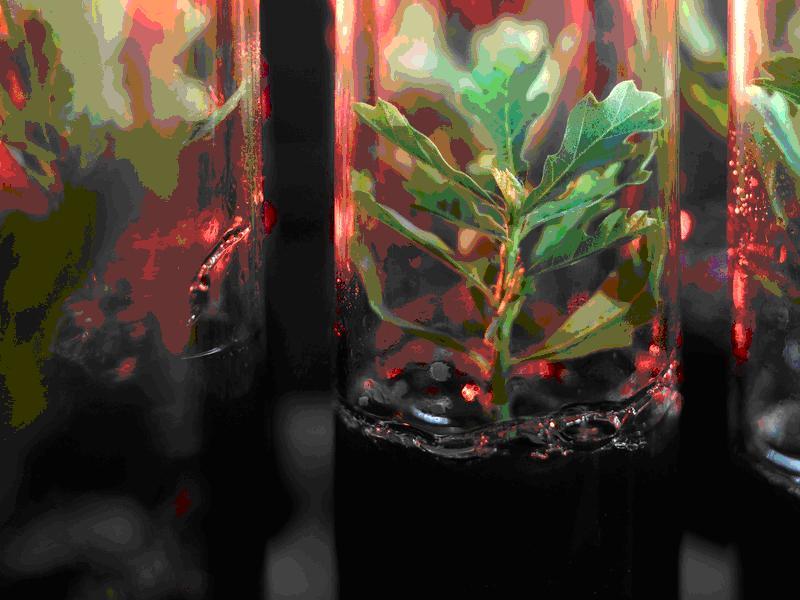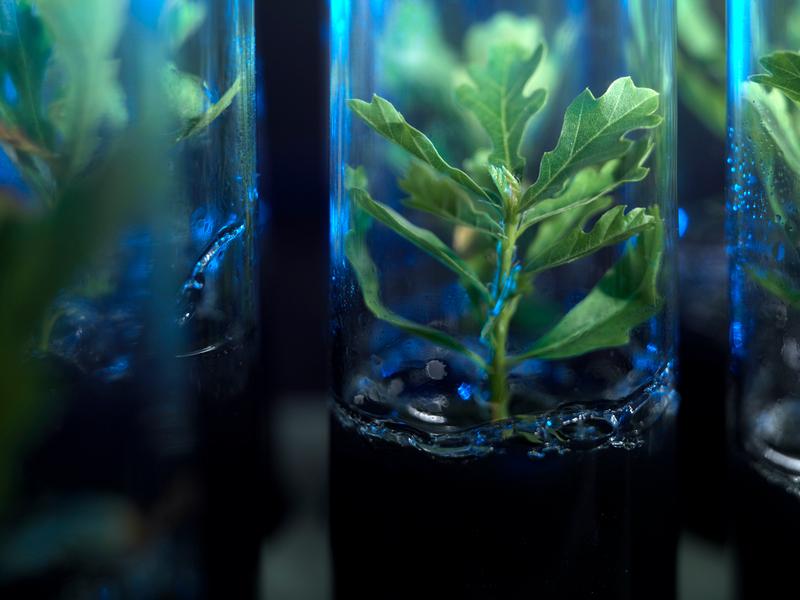Project Part 1: RootPatho-EM
(Phytophthora and ectomycorrhizal fungus)
F. Buscot, T. Grams, F. Fleischmann and R. Matyssek
Gene regulation and C and N fluxes during the endogenous rhythmic growth of oaks interacting with mycorrhizal as well as root pathogenic biotrophs
Genregulation und C und N Flüsse während des endogenen rhythmischen Wachstums der Eiche unter dem Einfluss von mykorrhizalen sowie von pathogen biotrophen Interaktionen
Trees produce photoassimilates and mobilize nutrients to support their own development but also associations with beneficial or detrimental biotrophic partners. Similar to major forest trees, oaks growth follows an endogenous rhythm with alternating flushes in root and shoot, which was shown to affect the formation of ectomycorrhizal symbioses between roots and fungi. The project part RootPatho-EM aims at enlightening the implication of this rhythm in interactions with the ectomycorrhizal fungus Piloderma croceum and the susceptibility against the root rot pathogen Phytophthora quercina. In controlled experiments with oak microcuttings inoculated with one or both microorganisms the plant resource allocation will be followed after labelling with 13C and 15N, while the plant gene regulation will be monitored with a broad range Illumina RNA-Seq data. Additional experiments will investigate the impact of climatic fluctuations, tree neighboring and interaction with actinobacteria. The project part RootPatho-EM also assumes the central function of producing the plant material and a mobile 13CO2/12CO2-labelling unit to analyse C allocation for the whole application, thus crucially contributes to its joined experimental platform (JEP) for rational cross comparison of gene regulation and resource allocation patterns in all considered biotrophic interactions.
Bäume produzieren Photoassimilate und mobilisieren Nährstoffe für ihr Wachstum. Diese werden aber auch von förderlichen und schädlichen biotrophen Partnern genutzt. Wie bei anderen Bäumen folgt das Wachstum von Eichen einem endogenen Rhythmus mit alternierenden Spross- und Wurzelwachstumsschüben, die eng mit C-Allokation verknüpft sind und die Bildung ektomykorrhizaler Symbiosen zwischen Wurzeln und Bodenpilzen beeinflussen. Die Auswirkungen der Rhythmizität auf die Interaktionen mit dem Ektomykorrhizapilz Piloderma croceum und die Empfindlichkeit gegenüber dem Wurzelpathogen Phytophthora quercina liegen im Fokus des Projektteils RootPatho-EM. In kontrollierten Experimenten an in vitro Stecklingen unter Einfluss der Mikroorganismen werden parallel zur Untersuchung der Genregulation anhand von Illumina RNA-Seq Daten die Ressourcen-Allokation (C und N) mittels 13C und 15N Markierungen quantifiziert. In weiteren Experimenten werden die Einflüsse von klimatischen Änderungen, Nachbarbäumen und Aktinomyzeten untersucht. Des Weiteren übernimmt das Projektteil RootPatho-EM die zentralen Aufgaben der Produktion von Eichenstecklingen und der C Allokationsanalyse für den gesamten Antrag und trägt zu seiner gemeinsamen experimentellen Plattform (JEP) für funktionelle Vergleiche zwischen Genregulation und Ressourcenallokation entscheidend bei.




